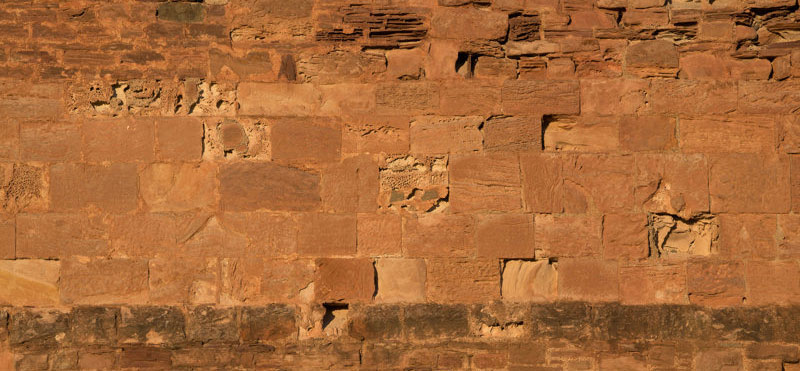How can Scotland re-establish its building stone industry?
British Geological Survey research, commissioned by Historic Environment Scotland, reveals an opportunity to re-establish the Scottish building stone market in order to maintain the country’s historic buildings.
For centuries, Scotland’s identity has been closely linked to its stone-built heritage. Historic buildings provide not just a tangible link to the past, but are also a huge draw for millions of tourists from around the world – a vital source of income for the local economy.
Historic Environment Scotland (HES) cares for more than 300 monuments and buildings of national importance across Scotland, which need to be protected for everyone’s future enjoyment and education. Maintaining these structures is an exercise that requires engineering expertise, highly skilled artisans and access to materials that will mirror those that were available at the time of construction.
Scotland’s built environment is intrinsically linked to the ground below it, created from diverse geology extracted from over 3700 quarries. It is this geology and the methods used to quarry, process and build with stone that create a sense of place, from the red sandstones of Dumfries to the grey stone granite of Aberdeen.
A new report, conducted by the British Geological Survey (BGS) and commissioned by HES, has highlighted the increasing opportunity to bring indigenous stone, including sandstone and flagstone, igneous and metamorphic rocks and roofing slate, back to the Scottish market. The opportunities presented within the report highlight the building stones and quarries most crucial to ongoing efforts to maintain these historic buildings for future generations, as well as supporting the potential for new build applications to contribute to Scotland’s transition to net zero.
Researchers found that:
- the cost of imported stone construction materials has risen by up to 98 per cent since 2015, possibly due to increasing fuel prices and shipping costs
- the Scottish and UK construction industry is increasingly vulnerable to erratic pricing and market volatility, due to an over-reliance on imported materials
- increased ranges in stone production locally create a more resilient supply chain and provide assurance of supply
- 139 disused building stone quarries and 31 quarries that currently only supply crushed-stone aggregate may have the potential to supply a significant proportion of Scotland’s building stone needs

Detail of the stonework at Tantallon Castle, constructed from local sandstone
Graham Briggs, materials project manager at HES, said:
“The dwindling supply of local materials to protect fundamental parts of Scottish history is placing unique pressures on those who wish to maintain and protect our traditional and historic buildings.
A renewed Scottish building stone market would not only create rural skilled jobs and reduce carbon emissions, but also improve conservation outcomes for our important historic buildings. With that in mind, indigenous stone suppliers are faced with increased pressures and costs that make them uncompetitive against cheaper imported materials.
The report demonstrates that Scotland is more than capable of being self-sufficient with regard to its building stone requirements going into the future; however, this will require investment and support through innovation in procurement.”
The full report suggests how the supply and use of Scottish building stones can be increased in Scotland, including increasing production at active quarries that already supply building stone.
The report also contains a series of three factsheets, which found:
- over 5 million tonnes of building stone are imported into the UK each year
- sandstone is the UK’s most imported stone each year
- roofing slate imports command the highest price – Scotland is particularly vulnerable to this, with no current source of Scottish roofing slate
- the cost of imported stone has almost doubled since 2015
Imogen Shaw, building stone scientist, BGS, said:
“If Scotland wants to continue to build in its traditional stone, conserving heritage buildings and ensuring new builds are also in keeping with the historic landscape, then action needs to be taken to source more stone locally.
Our latest report is a vital resource for policymakers and potential investors, providing them with a clear snapshot of current supplies that will help them to identify opportunities for growth and better inform investment in indigenous building stone production.”
The full factsheet is now available to read: Development potential for building stone resources in Scotland.







Leave a Reply
Want to join the discussion?Feel free to contribute!